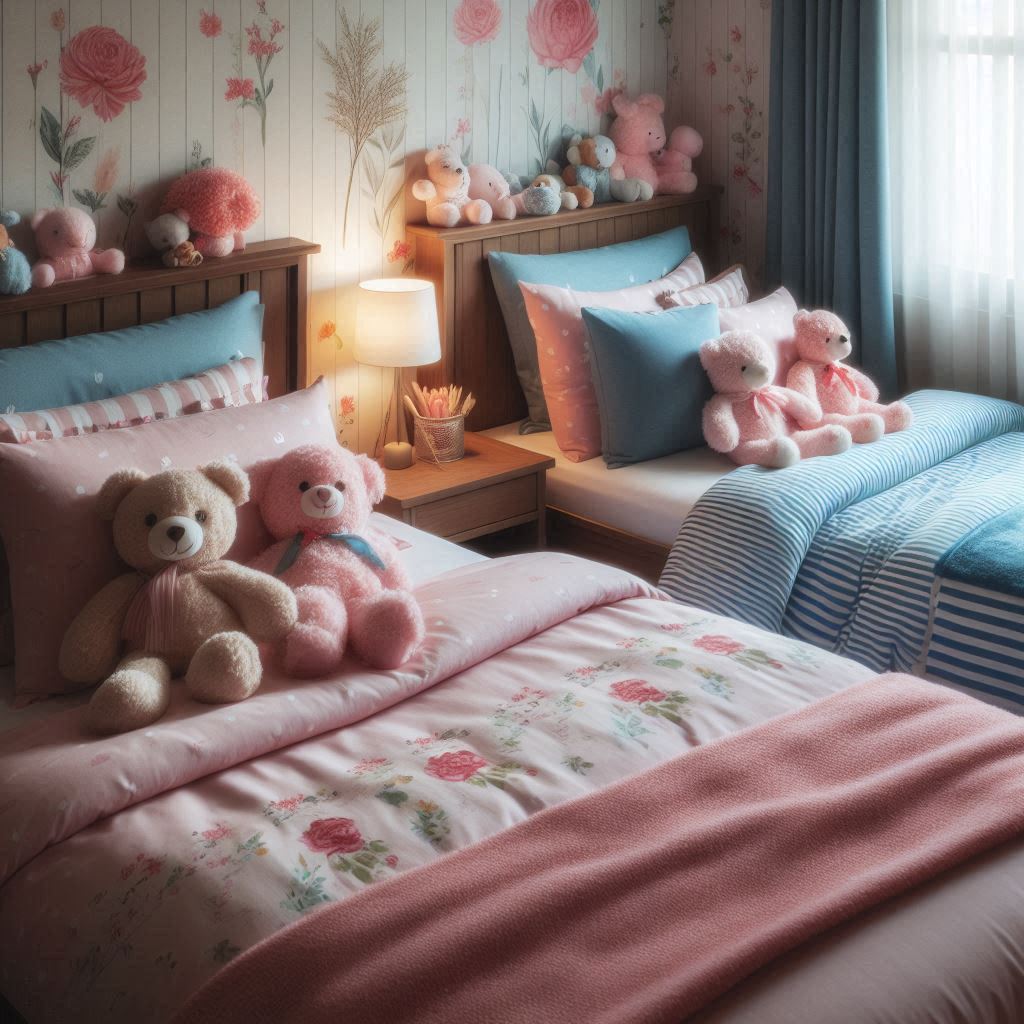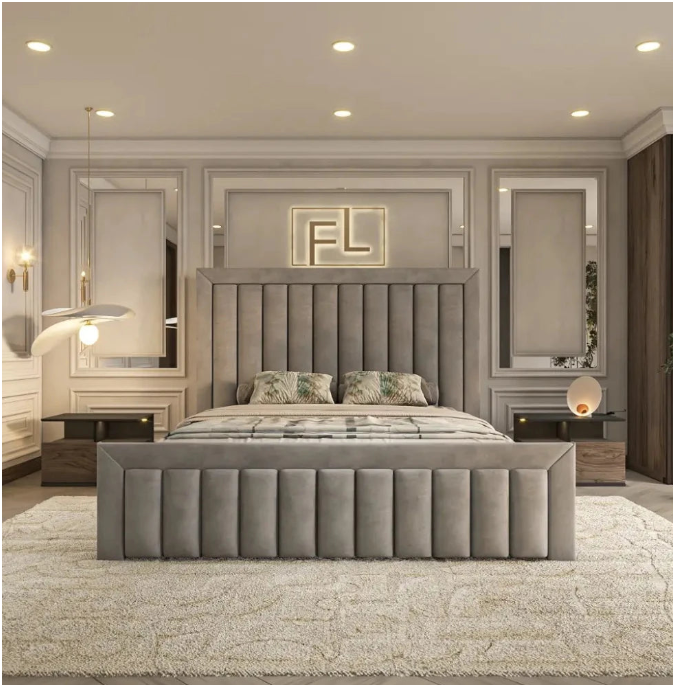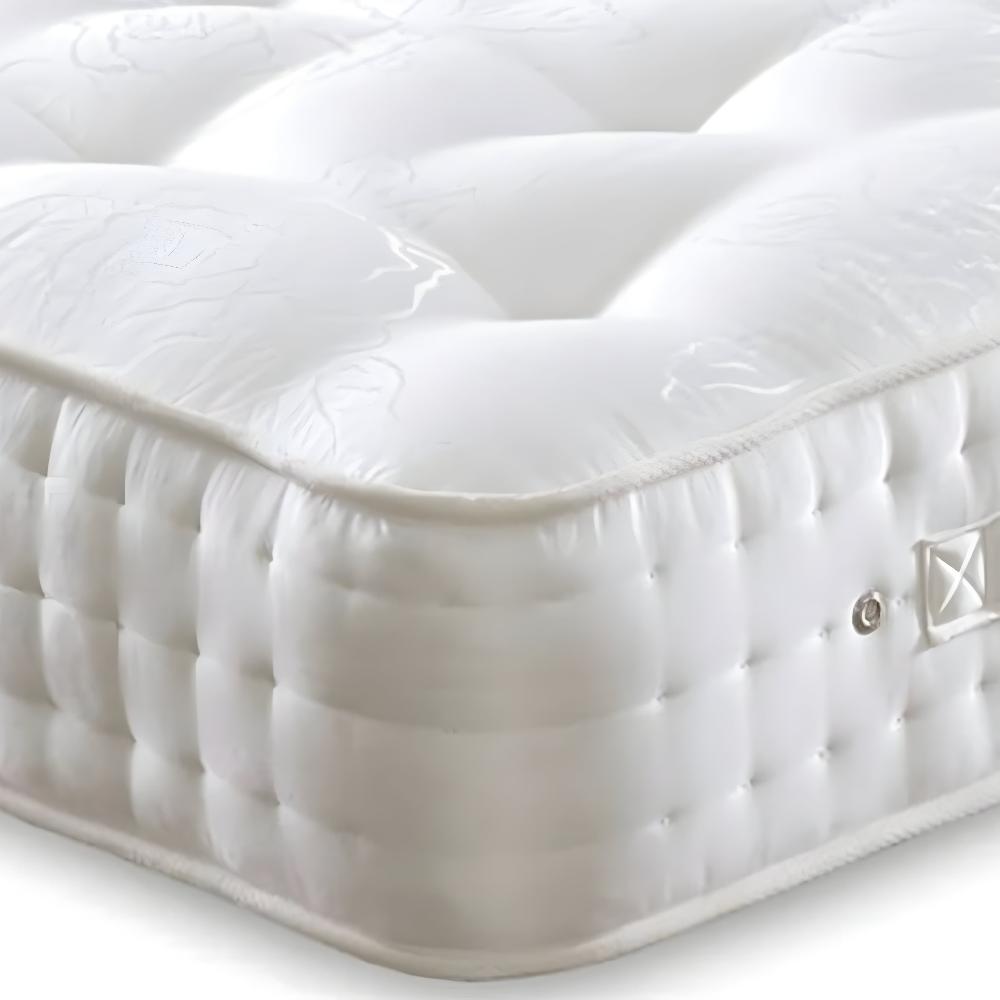
Single Beds in 2025: Why Every UK Home Still Needs One
Discover why single beds are making a comeback in 2025! From space-saving solutions to stylish designs, learn how they redefine comfort and practicality in modern UK homes.
Why Single Beds Still Rule in 2025
Introduction: The Return of the Solo Sleeper
Single beds are quietly reclaiming their throne in British homes. No longer confined to childhood bedrooms, they’ve evolved into smart, stylish choices for all age groups.
-
Kids love their cosy scale.
-
Teenagers appreciate the space to stretch.
-
Adults value the practicality.
They fit beautifully into minimalist interiors. In a world obsessed with doing more with less, single beds offer silent comfort and understated charm. A smart fit for anyone who values quiet luxury and compact living.
The post-pandemic UK household has shifted. Flexibility and personal space are prized more than ever. Single beds bring comfort without crowding, and independence without isolation. They're no longer an afterthought. They're essential.
Why Single Beds Still Dominate Small Space Living
Space is a luxury in modern UK homes. With rising urbanisation, new-build flats and terraced houses often demand clever use of every metre. Enter the single bed—small in footprint but mighty in value.
-
Ideal for box rooms, small bedrooms, flats, or guest rooms
-
Perfect for studio apartments or converted lofts
-
Fits snugly in alcoves or under sloped ceilings
-
Allows for additional furnishings like desks, dressers, or seating
The UK furniture trend leans towards dual-purpose. Think storage ottomans, foldable desks, or extendable dining tables. Single beds slot naturally into this aesthetic—especially when paired with integrated storage or sleek frames.
Less clutter. More breathing space. That’s what the modern homeowner desires.
Understanding UK Single Bed Sizes
Buying a bed? Know your UK sizes. It’s more complex than it seems—especially with overlapping names. Let’s clear the air:
-
Small Single: 75cm x 190cm (2'6" x 6'3") — ideal for toddlers or narrow rooms
-
Standard Single: 90cm x 190cm (3'0" x 6'3") — the go-to for most UK homes
-
Twin: Often used interchangeably with standard single, but not always equal
Confusion arises from US versus UK terminology. In the US, a 'twin' equals a standard single. In the UK, retailers may still label them differently. Always double-check measurements.
Mattress compatibility tips:
-
Never assume sizes are standardised across brands
-
Use a measuring tape before buying online
-
Buy bed linen designed specifically for UK sizes
An inch too big or small can throw off comfort and fit.

Exploring the Types of Single Beds
Every home has its own personality—and every bed its own function. Let’s explore the popular types of single beds in Britain today:
Wooden Frames:
-
Oak, pine, or walnut finishes
-
Sturdy, long-lasting, traditional warmth
-
Fits well in rustic, vintage, or classic interiors
Metal Frames:
-
Powder-coated finishes in black, white, or brass
-
Sleek silhouettes ideal for modern or industrial themes
-
Lightweight, easy to assemble and move
Divans:
-
Boxy base often paired with matching mattress
-
Soft-sided, space-efficient, no need for a separate frame
Ottoman Beds:
-
Hydraulic lifts allow full base storage
-
Best for seasonal clothing, linens, or kids’ toys
-
Streamlined style blends in anywhere
Daybeds & Pull-Outs:
-
Great for home offices doubling as guest rooms
-
Stylish backrest lets it function as a sofa by day
-
Trundle options provide second sleeping space
Bunk Beds:
-
For shared kids’ rooms or slumber parties
-
Maximises vertical space
-
Options with integrated desks or slides for added fun
Each type solves a specific need. Choosing the right one can transform a room's function.
Single Beds That Suit Every Purpose
There isn’t a one-size-fits-all approach to sleeping. That’s why today’s single beds cater to diverse lifestyles and needs:
Small Bedrooms:
-
Low-profile divans or metal frames keep the space open
-
Beds with wheels or foldaway options ideal for occasional use
Adults:
-
Solid wood or high-quality divan bases with orthopaedic mattresses
-
Understated yet mature styles in greys, creams, or navy
Children:
-
Low-to-ground bunk beds or themed beds (cars, castles)
-
Safety railings and rounded corners for peace of mind
Storage Lovers:
-
Ottoman beds with deep compartments
-
Beds with integrated headboard shelving or footboard drawers
Budget-Conscious Shoppers:
-
Sturdy options under £150
-
Look for metal frames or flat-packed wood that don’t skimp on quality
Your purpose should shape your purchase. Always prioritise comfort and functionality.
Choosing the Right Bed Frame Material
Bed frames do more than hold your mattress—they set the tone for your room. Here’s a breakdown of popular materials:
Wood:
-
Pros: Timeless look, strong build, adds natural texture
-
Cons: Heavier, usually more expensive, prone to scratches
Metal:
-
Pros: Modern, easy to maintain, lighter
-
Cons: Can creak over time, colder aesthetic
Fabric Upholstered:
-
Pros: Soft, elegant, available in various colours
-
Cons: Needs cleaning, may trap dust or allergens
Faux Leather:
-
Pros: Sleek, stain-resistant, stylish
-
Cons: Less breathable, prone to cracking with age

The Rise of Storage Single Beds in UK Homes
Clutter is the enemy of calm. And UK homes, especially in cities, battle clutter daily. Single beds with storage make a noticeable difference:
Ottoman Beds:
-
Full-lift bases open up to reveal deep storage
-
Ideal for out-of-season clothes, duvets, or sports equipment
Underbed Drawers:
-
Easier for kids or elderly to access
-
Great for daily essentials like books, shoes, or toys
Integrated Headboard Shelving:
-
Keeps night-time necessities within reach
-
Replaces the need for bedside tables in ultra-tight rooms
Space-saving tip: Use vacuum storage bags within underbed compartments to maximise capacity.
How to Pick the Perfect Single Bed
A thoughtful bed purchase saves you time, money, and restless nights. Here's what to consider:
Room Size:
-
Always measure wall-to-wall, and account for door swing
-
Leave walking space around the bed (ideally 60cm minimum)
User Type:
-
Children need safe, playful beds
-
Adults require support and size
-
Guests benefit from flexible or foldable options
Mobility:
-
Low-profile beds for seniors or anyone with physical challenges
-
Avoid high ottomans if lifting is an issue
Style Fit:
-
Match your bed to the existing room tone
-
Use Pinterest or showroom visits to spark ideas
Choose with intention—not impulse.

Styling Your Single Bed Like a Pro
Small beds can still pack a big visual punch. Here’s how to make yours shine:
-
Colour Themes:
-
Use calming shades like sage green, beige, or soft blues
-
Add one bold accent colour (burnt orange, mustard, navy) to liven it up
-
Layering:
-
Start with a textured duvet
-
Add a soft throw blanket folded at the foot
-
Top with 2–3 cushions in varying sizes
-
Headboards:
-
Upholstered headboards offer instant elegance
-
Wooden ones create a rustic or Scandinavian vibe
-
Accessories:
-
Add a floating shelf or hanging light instead of a bedside table
-
Wall art or decals can define the bed’s space
A well-styled bed encourages better sleep and elevates your space.
Conclusion
In a world full of noise, the single bed offers calm. It’s the quiet achiever of British bedrooms—practical, versatile, and increasingly elegant.
Whether you’re designing for your child, setting up a serene guest room, or downsizing to simplify your space—the single bed adapts. Its smaller size never limits its potential.
In 2025 and beyond, single beds won’t just be seen as space-savers. They’ll be design statements. Comfort sanctuaries. Symbols of smart living.
The solo sleeper is no longer alone—it’s leading the way.
FAQs
1. What are the standard dimensions of a single bed in the UK?
-
A typical UK single bed measures 90 cm x 190 cm, offering ample space for an individual. It is important to ensure that both the mattress and frame adhere to these measurements to avoid sizing issues.
2. What is the difference between a UK single bed and a US twin bed?
-
Although often used interchangeably, the UK single bed (90 cm wide) is slightly narrower than the US twin bed (96.5 cm wide). This distinction is crucial when purchasing internationally.
3. Can adults sleep comfortably on a single bed?
-
Yes, many adults choose single beds for solo sleeping, especially in smaller spaces. These beds provide sufficient length, but they are narrower, so they are best suited for individuals rather than couples.
4. Is a single bed suitable for two people?
-
Although technically possible, it is generally not recommended for two adults to sleep on a single bed. The confined space might lead to discomfort, especially for larger individuals.
5. At what age should children transition to a single bed?
-
Children usually make the switch from a cot to a single bed between the ages of 4 to 5 years, though it varies. Look for beds with safety rails if the child is younger to prevent falls.
6. What are the various styles of single bed frames available in the UK?
-
The options include:
-
Wooden frames: Classic and sturdy.
-
Metal frames: Sleek and modern.
-
Upholstered beds: Soft and stylish.
-
Divan beds: Often with built-in storage.
-
Ottoman beds: Provide extra storage by lifting for easy access.
7. What storage options are available with single beds?
-
Many single bed frames feature integrated storage solutions like under-bed drawers or lift-up ottoman storage, making them perfect for maximizing space in smaller rooms.
8. What is the weight limit for a single bed?
-
Weight limits for single beds vary depending on the material and design. For metal or wooden frames, the typical weight capacity for one person is approximately 100-150 kg. Be sure to verify with the manufacturer for specific limits.
9. Are single beds a good choice for elderly individuals?
-
Single beds with a higher frame or additional support features, like reinforced edges or orthopedic mattresses, can be a great choice for elderly individuals, making it easier for them to get in and out of bed comfortably.
10. How do I choose the best mattress for a single bed?
-
When selecting a mattress for a single bed, consider:
-
Firmness: Choose based on your sleeping position (firmer for back sleepers, softer for side sleepers).
-
Material: Memory foam, pocket springs, or hybrid models each offer different benefits.
-
Health conditions: Orthopedic options are ideal for people with back pain.



